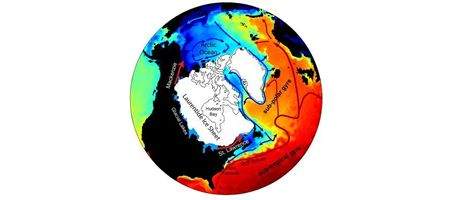After 30 years of debate, scientists believe they’ve discovered the trigger for the last great freeze of the Earth, some 12,900 years ago.

They say they’ve established that the flood waters from the melting of the enormous Laurentide Ice Sheet flowed northwest into the Arctic first, weakening ocean thermohaline circulation and cooling global climate.
If instead it had flowed east into the St Lawrence River valley, they say, Earth’s climate would have remained relatively unchanged.
“This episode was the last time the Earth underwent a major cooling, so understanding exactly what caused it is very important for understanding how our modern-day climate might change in the future,” says University of Massachusetts Amherst geoscientist Alan Condron.
The Younger Dryas, or ‘Big Freeze’, took place after glacial Lake Agassiz, at the southern edge of the Laurentide ice sheet covering Hudson Bay and much of the Canadian Arctic, catastrophically broke through an ice dam and rapidly dumped thousands of cubic kilometers of fresh water into the ocean.
This is believed to have halted the sinking of very dense, saltier, colder water in the North Atlantic. And it’s this that drives the large-scale ocean circulation – the thermohaline circulation – that transports heat to Europe and North America.
Using a new, powerful ocean-ice circulation model, the team found that if Lake Aggasiz had instead drained into the North Atlantic down the St Lawrence River, it would have weakened the thermohaline circulation by less than 15 percent.
“Our results are particularly relevant for how we model the melting of the Greenland and Antarctic Ice sheets now and in the future. It is apparent from our results that climate scientists are artificially introducing fresh water into their models over large parts of the ocean that freshwater would never have reached,” says Condron.
“In addition, our work points to the Arctic as a primary trigger for climate change. This is especially relevant considering the rapid changes that have been occurring in this region in the last 10 years.”






